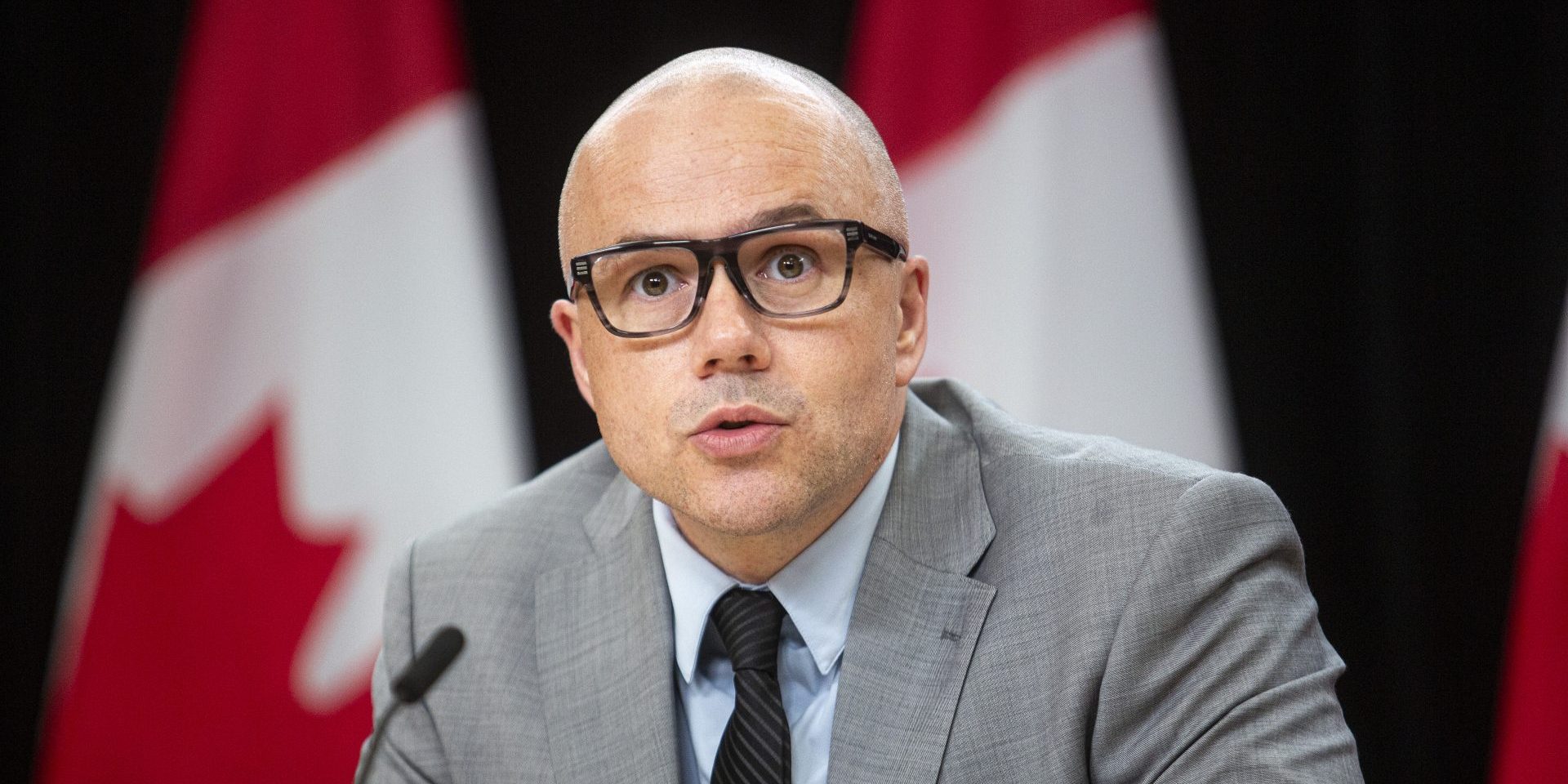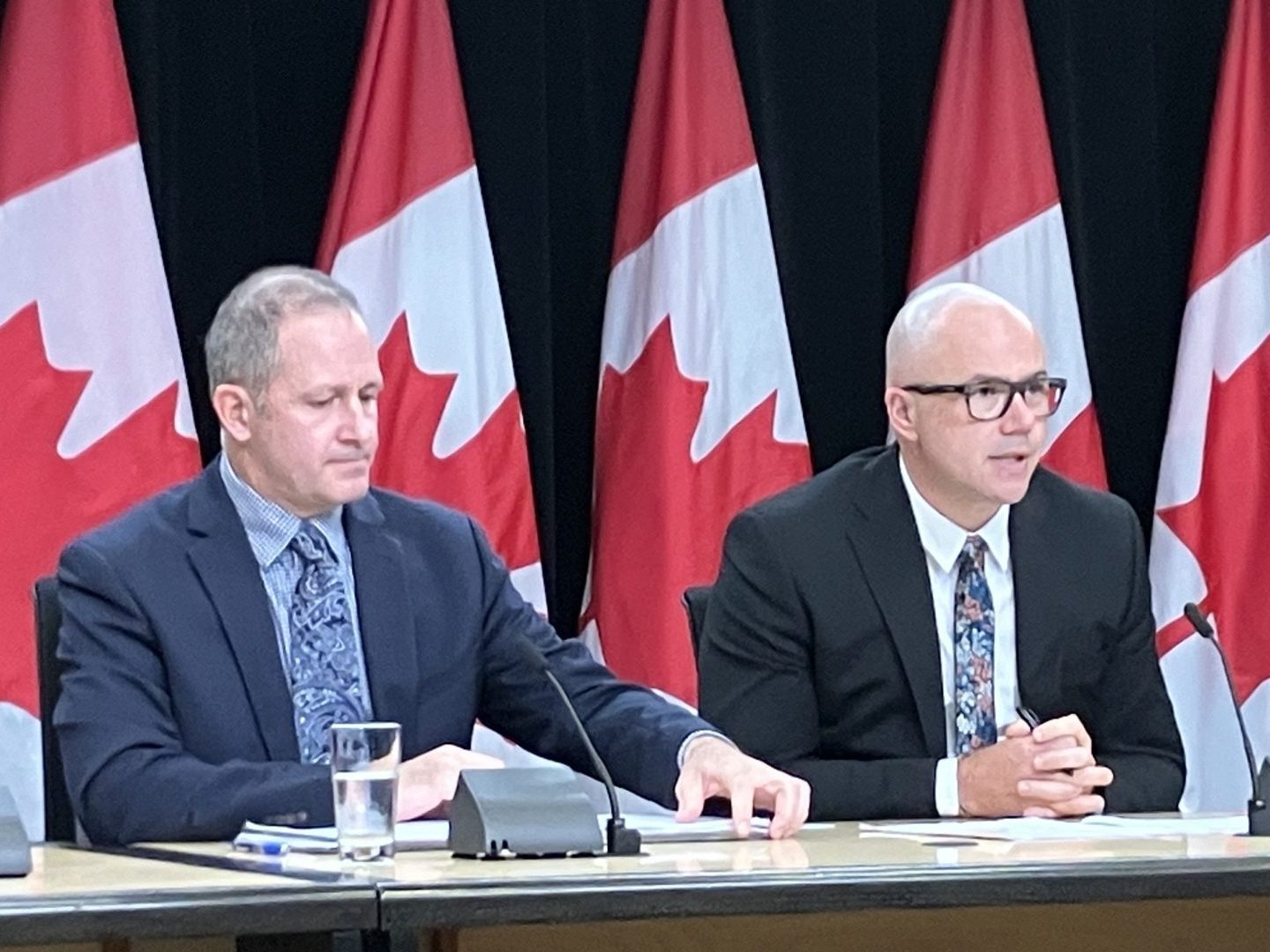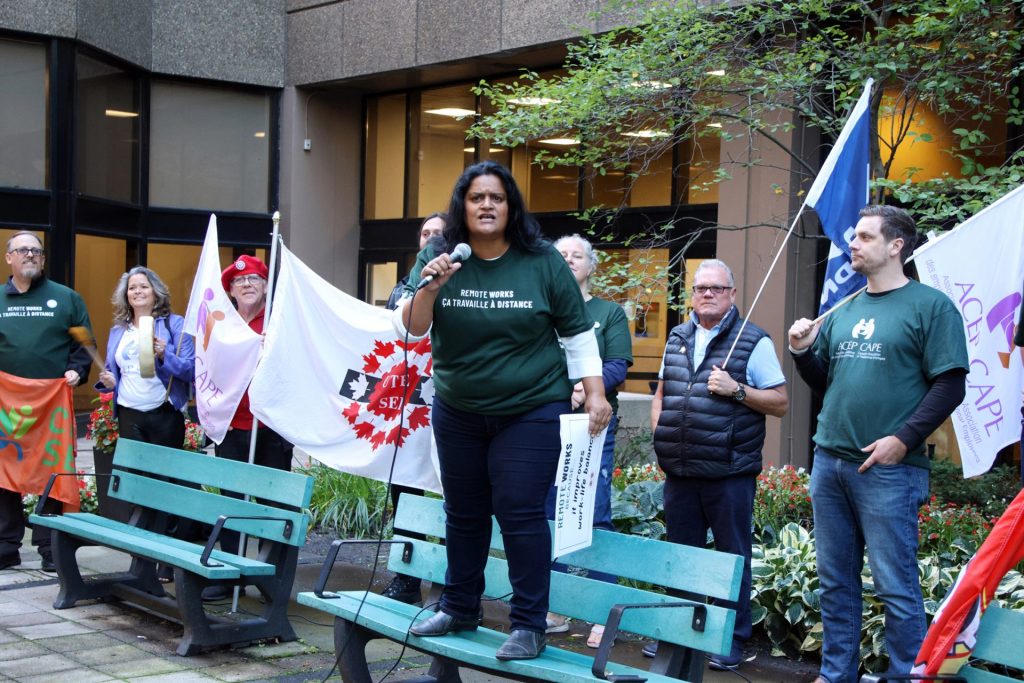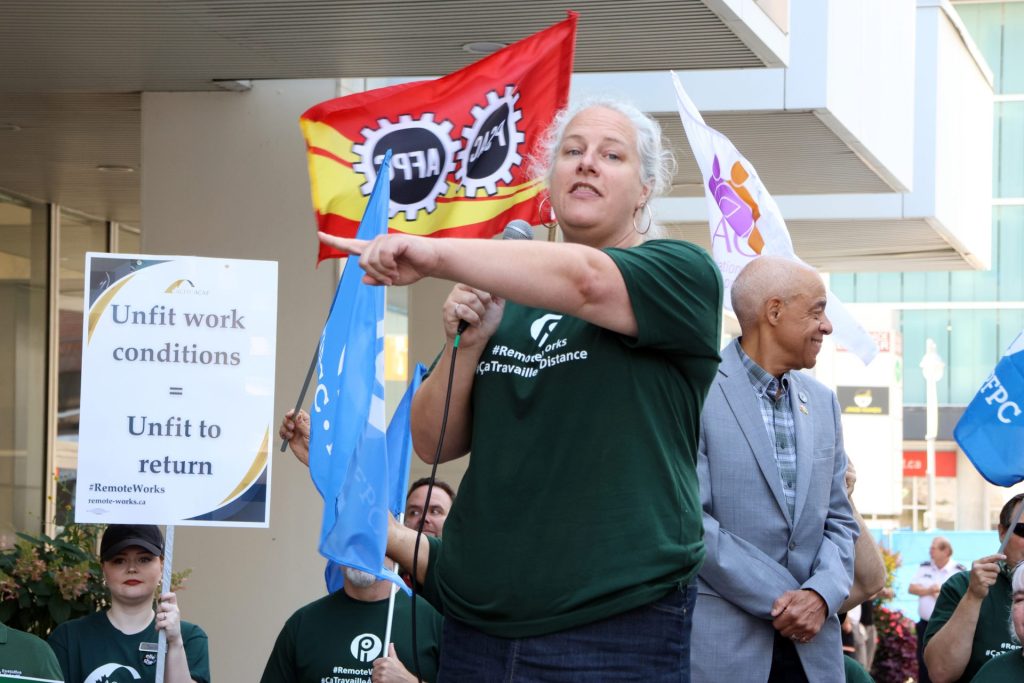Feds aim to clear 112,000 Phoenix backlog cases by fiscal year-end, but unions call efforts ‘too little too late’

The federal government says it is setting “aggressive targets” to clear about 112,000 public servant payment claims by March 2025, but one union says the ongoing delay and current backlog shows it’s time for new talks about additional compensation for damages related to the Phoenix pay system.
Alex Benay, associate deputy minister at Public Services and Procurement Canada (PSPC), gave an Oct. 2 quarterly progress report on the years-long effort to replace the problem-plagued pay system.
He said that by fiscal year end, the government plans to tackle 112,000 backlog cases, starting with the 19,000 people hardest hit. He said PSPC has already closed 5,000 of those priority cases. Benay said eliminating Shared Services Canada’s 12,000-case backlog is another goal for this year. That department will also be the first to be integrated into the new system on trial bases.
Benay said PSPC reduced the net backlog by 14 per cent of the total. But in a July 2024 update, the government outlined plans to clear the backlog by March 2025.
He noted that the number of new claims could affect this target. Given that intake is outside the government’s control—and remains “steadily high”—Benay said it becomes harder to reduce the backlog.
“As we clear cases, it means that new backlog cases can simply emerge,” he explained, adding the focus is on reducing the intake from departments, and increasing the speed at which cases are processed.
As of August 2024, the Phoenix backlog has 408,000 financial transactions in limbo, with 209,000 of those cases waiting to be resolved for more than a year, according to PSPC.
He told reporters the Treasury Board Secretariat made “significant progress” in improving HR and pay services for federal public servants over the past three months.
Benay stressed the government does not want to transfer any cases older than a year into the replacement system that is in the works. He added that the plan is to approach this on a department-by-department basis over multiple years.

Phoenix was initially intended to centralize payroll administration for federal employees. The IBM-made system was created in June 2011 through a competitive procurement process under the Conservative government. After the program was rolled out by the Liberal government in 2016, unions raised the alarm that the system was being prematurely rushed out the door. The errors in its implementation resulted in substantial inconsistencies from early on, with hundreds of thousands of public servants being overpaid, underpaid, or not paid at all in some cases. The program, once billed as a cost-saver, has so far cost more than $3.5-billion.
“The current platform is not fit for purpose. We have too many customizations," Benay said. "And it was not well implemented."

Francis Trudel, associate chief human resources officer at the Treasury Board Secretariat, said the environment they are operating in is "quite complex" with more than 400,000 employees represented by 17 unions and 58 collective bargaining agreements, but they are working to "simplify” some of those conditions of employment to minimize the impact on pay.
Treasury Board 'dragging its feet' on damages deal, says PIPSC
Sharon DeSousa, Public Service Alliance of Canada national president, said PSAC expects to see “real progress” to address ongoing Phoenix pay issues and the staggering backlog.
"New tools to help compensation advisors handle pay issues are a good start, but eight years later, it's too little too late,” DeSousa said by email following the government’s update.

DeSousa, whose union represents more than 240,000 workers, said that progress would mean hiring and training more experienced compensation advisors to fix new issues, as well as eliminating the massive caseload.
The government says it has hired more than 1,100 compensation agents since September 2022, but union representatives say some have since left, so there are not enough advisers available to address the issues. It means the government is increasingly relying on artificial intelligence to do the work.
Jennifer Carr, president of the Professional Institute of the Public Service of Canada, said she is "cautiously optimistic," but the government has long promised to address the problems, "and we're still waiting.”
“We have heard this before," said Carr, whose union represents 75,000 members across the country.
Carr said the government needs to recognize the harm caused by the broken pay system over many years, and its impacts on employee morale. Carr said the union is trying to broker another damages deal, but said the Treasury Board has been “dragging its feet.”
In 2019 and 2020, the federal government offered financial compensation up to $2,500 to current and former employees for damages related to the Phoenix pay system, covering the period between 2016 and 2020, following agreements reached with unions.

“You can't come and ask us to sit at the table and negotiate with you without recognizing the harm Phoenix has done to federal public servants,” Carr said, adding that not having stable pay for years has a detrimental effect on the public servants.
Carr also noted that the delay in paycheques has forced some employees to leave the federal public service and become contractors.
“Because when they become contractors, not only are they paid correctly and on time, but they also get reimbursements for any out of pocket expenses, as well as their overtime. So at some point, it's the cumulative effects of everything that is going on,” she said.
Pay system cost 'a lot to get it wrong last time,’ says Benay
Benay said the government is planning to “iterate slowly” the launch of Dayforce—the replacement system for Phoenix.
“I am not personally in favour of a big bang approach like we did last time, which is simply pressing a button and launching it to 100 departments,” he said.
“We don't want to replicate the mistakes of the past,” said the senior official.
According to Benay, the government will have a clear idea of how much the new system will cost, and how it will be rolled out by the end of this fiscal year in March 2025. The system launch is expected to take multiple years.
Projected costs for 2024-25 sit at over $800-million for the current pay centre's operations, of which the centre and its staff account for $350.3-million, followed by $234.6-million for applications and IT support. The "transformation" of that system is already set at more than $160-million for this fiscal year.
PSPC signed a contract with Dayforce Inc. (formerly known as Ceridian) in September 2021 to test its human resources and pay systems platform, and has been testing the human capital management platform provided by the contractor since 2022.
The department’s Feb. 1, report identified Dayforce as a “viable option” for the federal government’s next HR and pay system. The system uses a Software as a Service delivery model, which provides users with access to a service via the internet. The Canada-made platform combines payroll, HR, benefits, talent, and workforce management in a single cloud application.
“Now we have to determine the feasibility of deploying the solution. How ready are we to deploy Dayforce is the question,” said Benay, explaining this means confirming that the program has the right features, and that it can be configured to address the needs of the government.
“We're going to be looking at running two systems in parallel because it's the safer bet,” Benay said. “It has cost us a lot to get it wrong last time."
The Phoenix pay system was designed to streamline the government’s 40-year-old system administered manually and save $70-million annually. Government records show there have been 50 amendments to the initial Phoenix contract to fix errors within the system between June 2011 and December 2020.
The current HR and pay systems administer the payroll for over 430,000 current and former public servants from over 100 departments and agencies. In 2023, this represented more than 13-million payments, totalling approximately $36-billion.
Budget 2024 earmarked $135-million to test a new HR and pay solution to replace Phoenix, with $112.1-million allocated to PSPC, and $22.7-million to the Treasury Board. The total also includes the $85-million the government spent to amend its contract with Dayforce to continue testing and customizing the system in line with its needs.
ikoca@hilltimes.com
The Hill Times
Transactions ready to be processed: 408,000
- 255,000 financial transactions
- 28,000 financial transactions sent to home departments and agencies for processing and closure
- 63,000 transactions with no financial impact, or general inquiries
- 7,000 collective agreement transactions
- 55,000 transactions waiting to be closed for which employees have already received payment






 LICENSING
LICENSING PODCAST
PODCAST ALERTS
ALERTS













